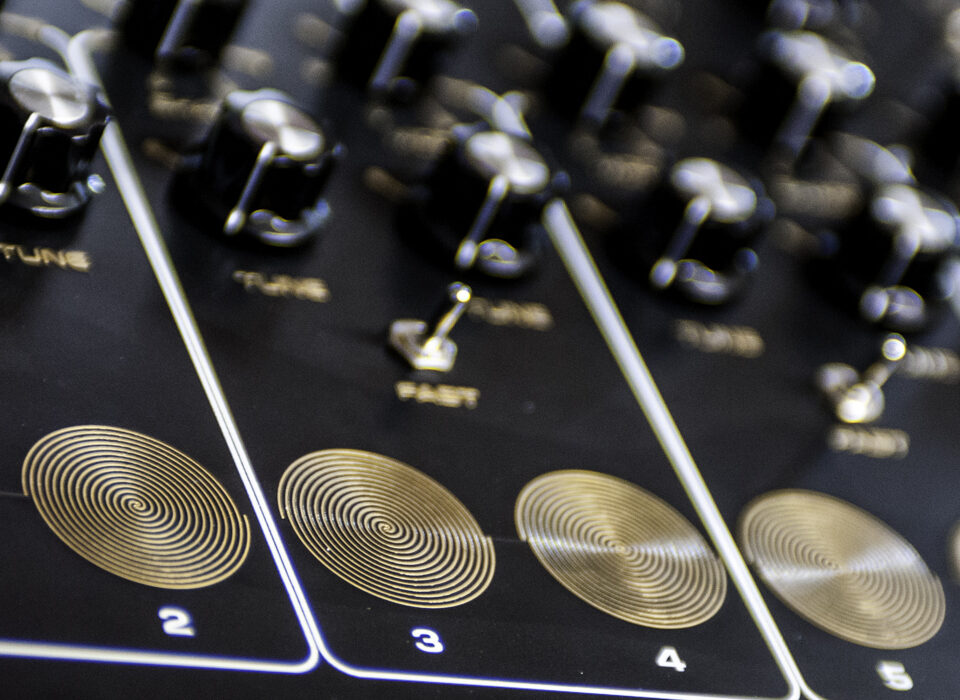SOMA Laboratories
SOMA Laboratories is a small boutique company focusing on developing extraordinary electronic instruments. The company was founded by Vlad Kreimer in 2016 after the success of the LYRA-8 synthesizer which he developed. They are located in Russia (design and development) and Poland (manufacturing).
Most SOMA Laboratories instruments are available as ready to use commercial products. The LYRA-8 however, is also available as a DIY project. You buy the PCBs and you have to source the components and build it yourself. That’s what I did.
Building the LYRA-8
The DIY kit contains three PCBs and two HEF4093 NXP (SOIC-14) SMD ICs. The quality PCBs look very nice and are easy to work with.
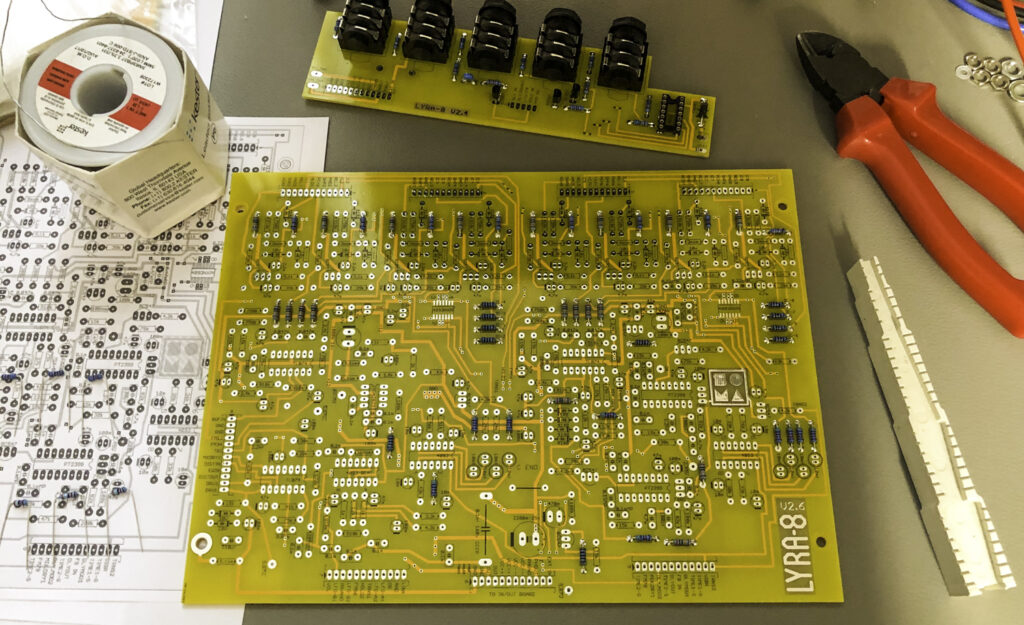
Populating the main PCB was pretty straight forward. The only thing that was a bit strange were the markings for some of the capacitors. Soma Labs uses mF instead of the commonly used uF for microfarad. I read somewhere however, that this is commonly used in countries that use the Cyrillic alphabet.
Populating the front panel PCB was a bit tedious as the pots and switches had to be soldered to the PCB using short wires (I used left-over pieces of cutoff component leads).
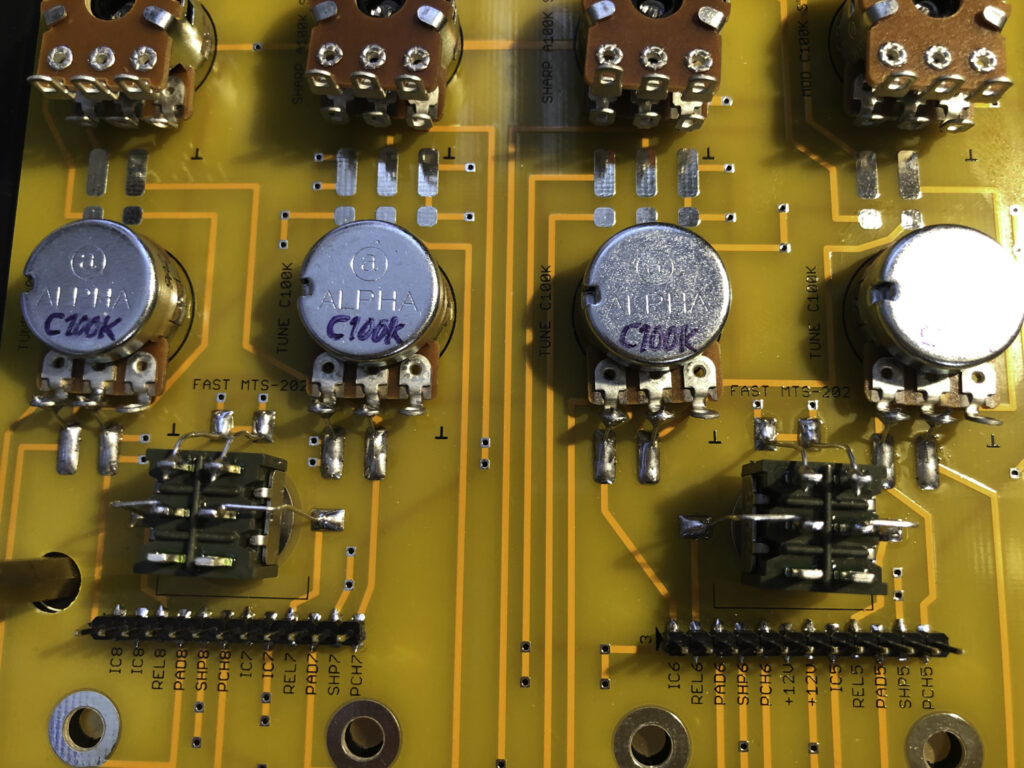
The three PCB’s are connected together by 9 interconnect wires. This took quite some time to assemble but it worked out very well.
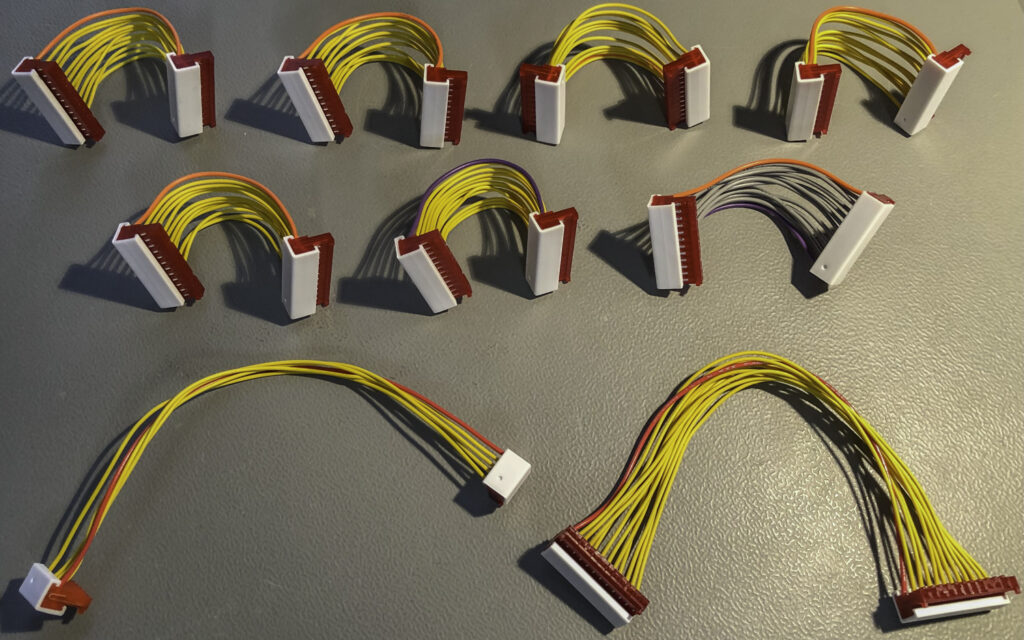
Here is a picture of the PCB’s all wired up and ready to be installed in its enclosure. Maybe not the most efficient way of designing it but the overall aesthetic is very nice. as shown in the following picture.
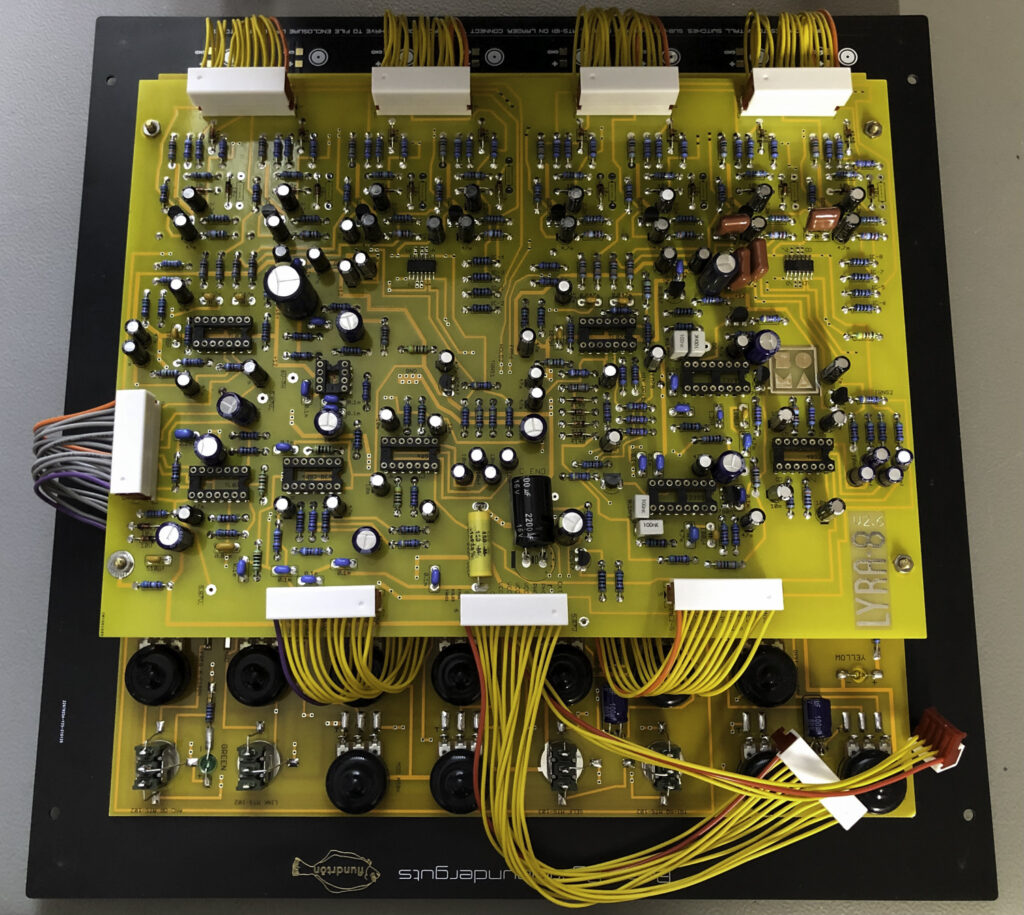
Enclosure and back panel
I used the standard Hammond 1444-12123 enclosure (12″ x 12″ x 3″). This was the enclosure that the front panel I wanted to use was designed for. Unfortunately, the factory drilled holes didn’t line up with the front panel holes so I rotated the enclosure 90 degrees and drilled new holes for mounting the front panel.
As can be seen in the picture below I already drilled the holes for the audio connectors en DC power supply. I later realised that I had forgotten the hole for the head phones connector so I had the drill an extra hole to accommodate for that.
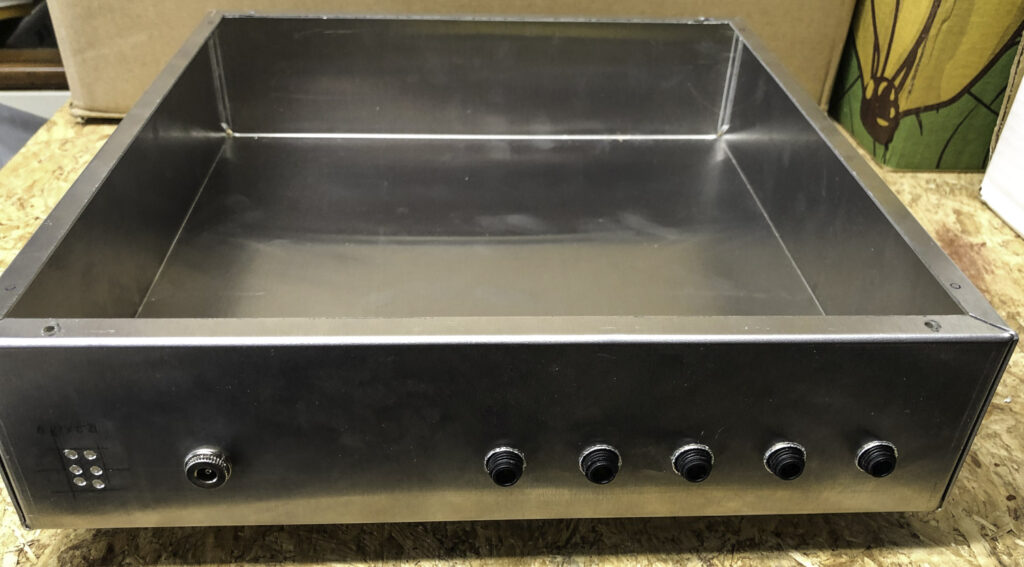
I designed a custom back panel (with head phones connection!) using Front Panel Designer just the make it look nice as I didn’t want to use sticky labels or anything like that on the back panel.
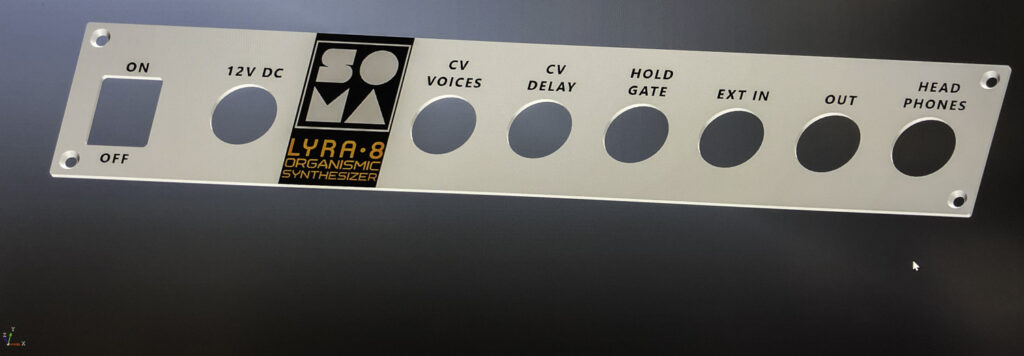
I bought the beautifully designed Hammond Helix Standard Panel from flundrtōn. Check out his website if you’re interested in a panel for your LYRA-8. He has several designs for sale.
In the picture below you see the front panel on the enclosure and a paper prototype of my back panel design. I always use paper prototypes for the panels I design to make sure everything fits before manufacturing the actual panel.
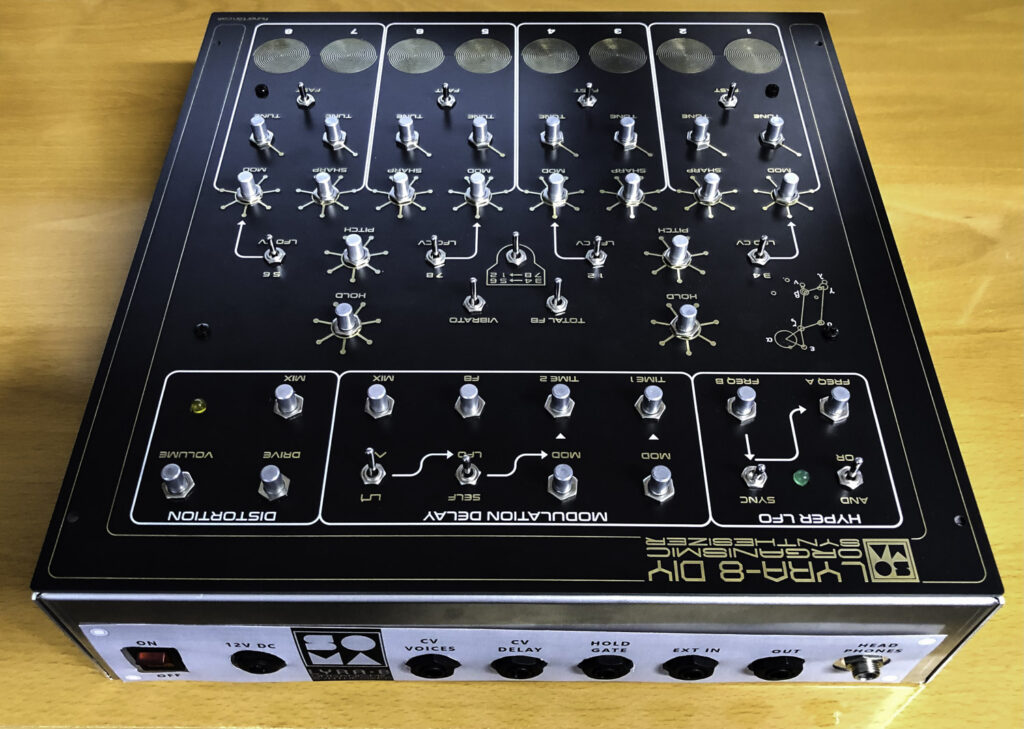
The final result
Before building everything together I first tested the LYRA-8. No magic smoke, it worked first time.
The pictures below show the final result of my build.
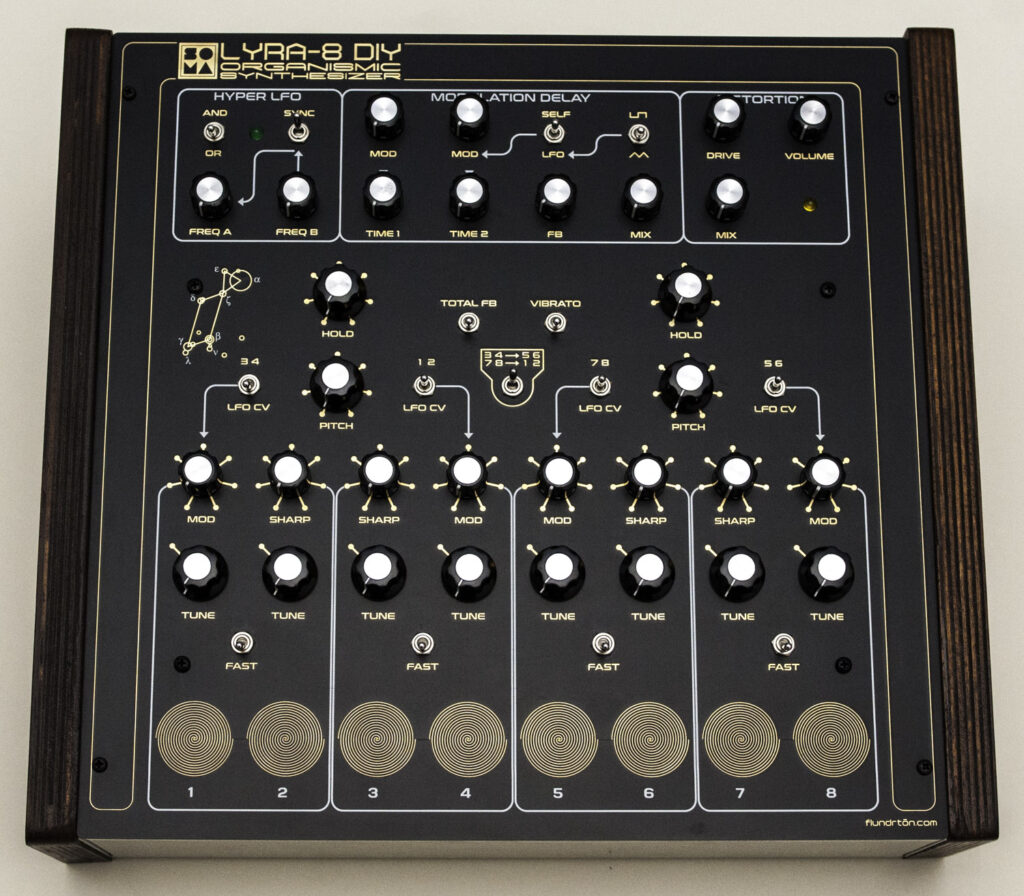
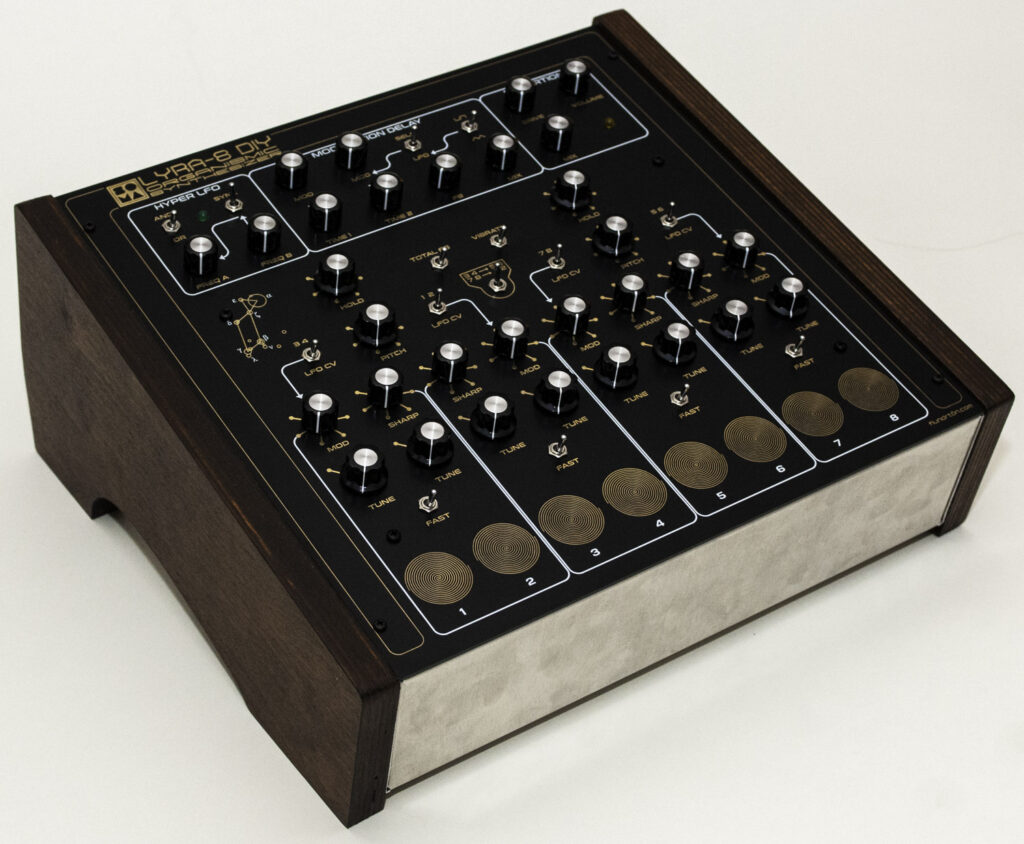
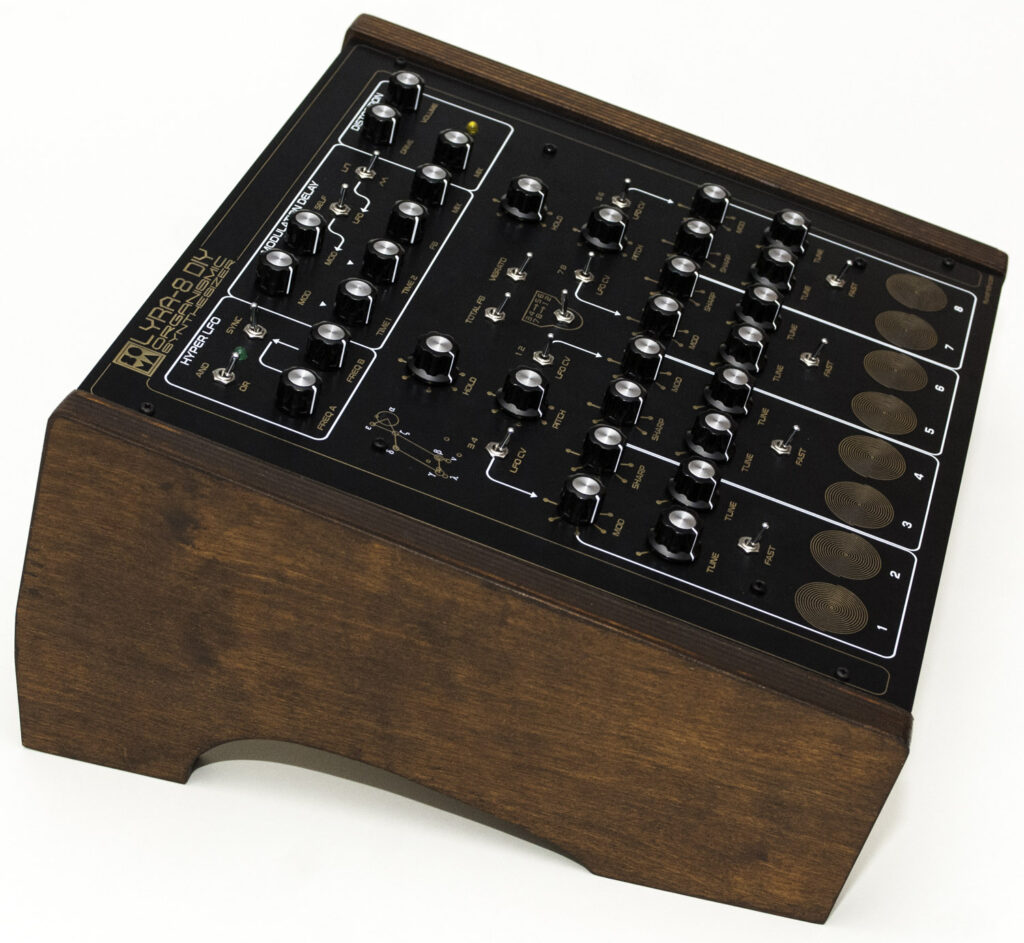
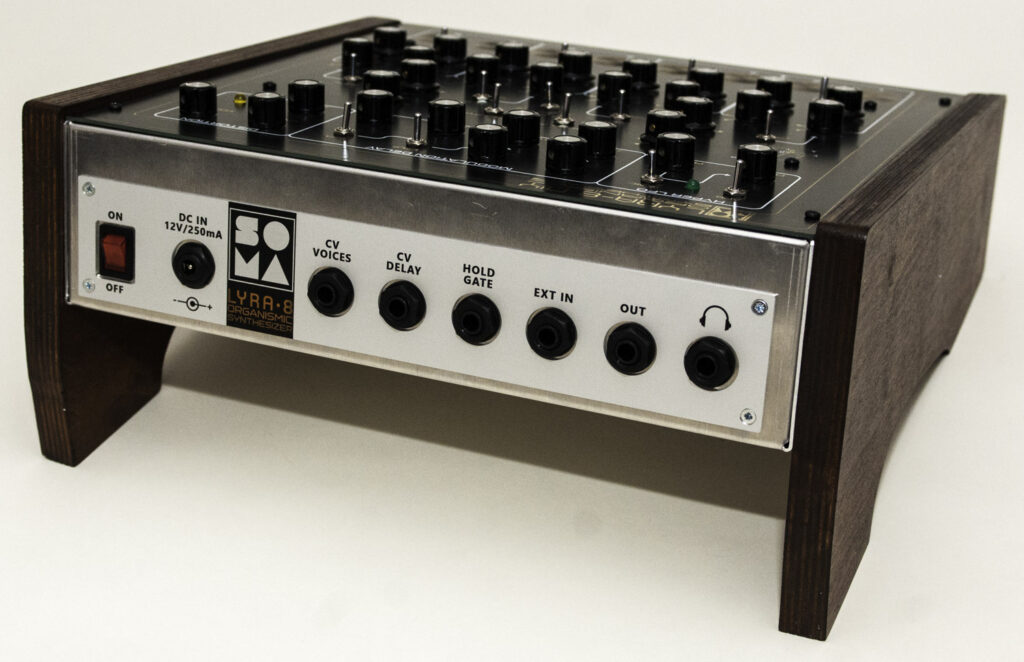
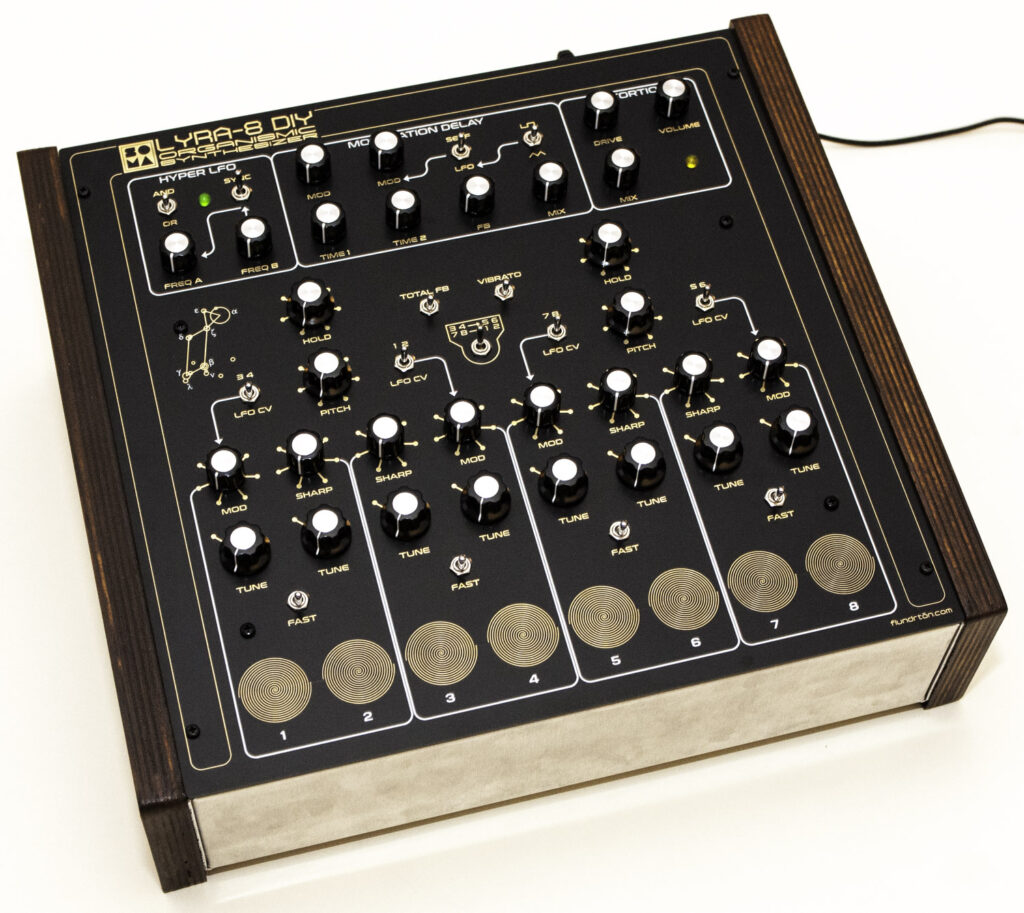
First impressions of the LYRA-8
I have been playing with the LYRA-8 for a couple of days now and I really like this instrument. It is perfect for creating ambient and drone based music. It can do analogue pad-like sounds but also rhythmic drone patterns. Its sonic palette is pretty broad.
And if you feed its audio into a nice reverb or delay the result sounds awesome.
I will definitely use the LYRA-8 in new music.
